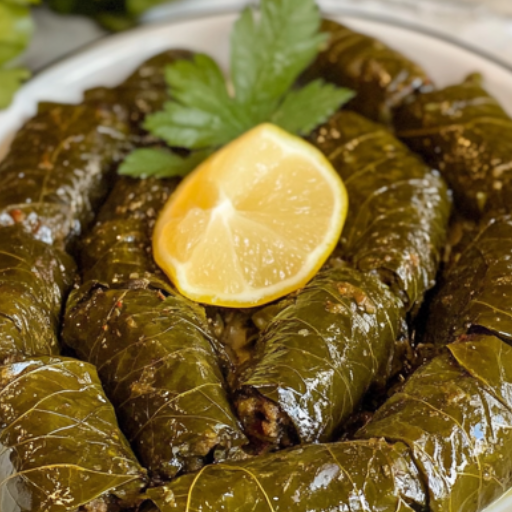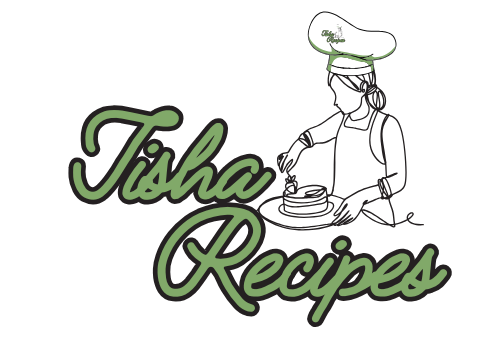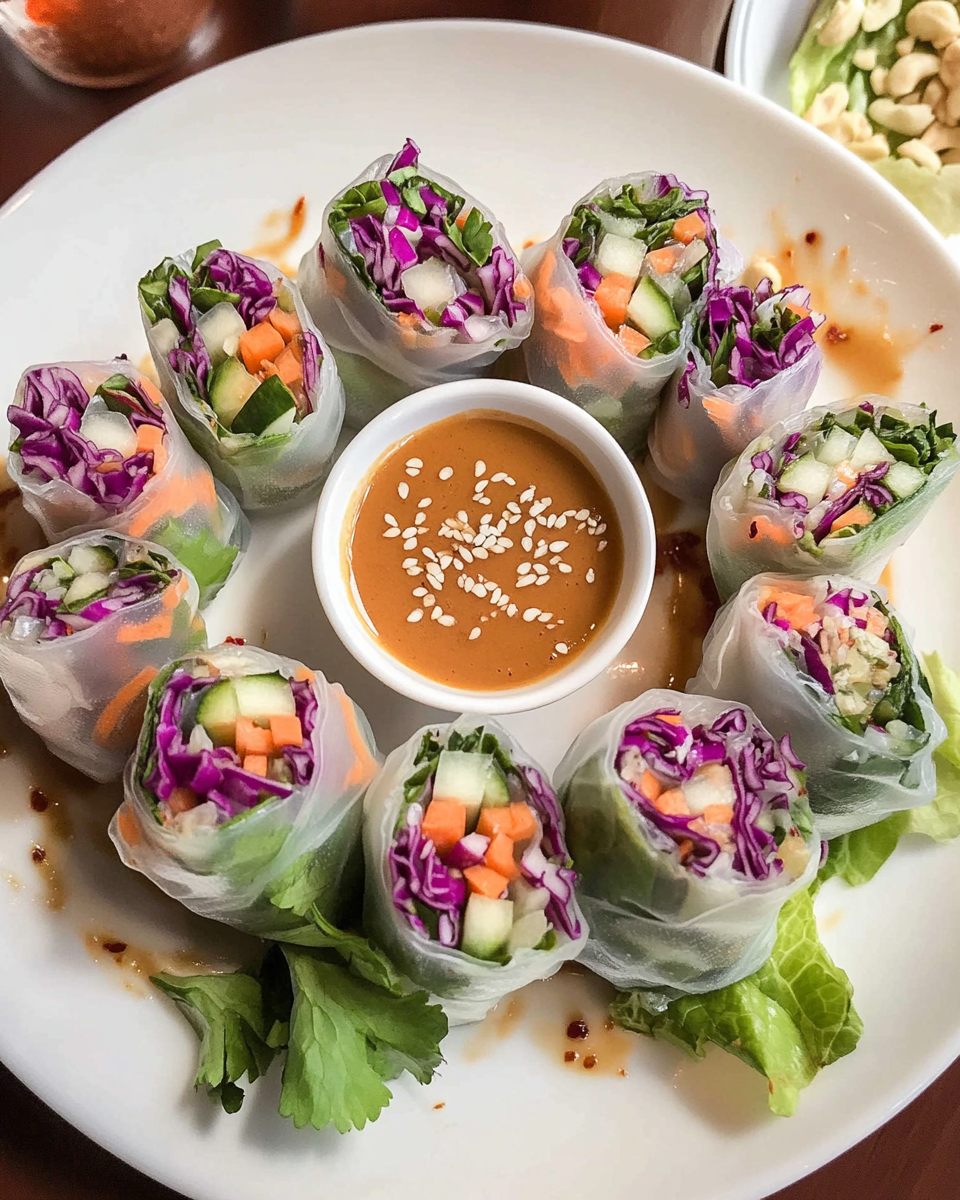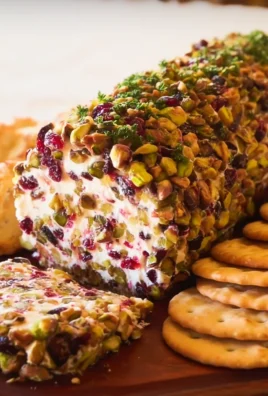
Mediterranean stuffed grape leaves, known widely as dolmas or dolmades, are one of the most iconic culinary symbols of the Mediterranean and Middle Eastern world. Their intricate wrapping, herbaceous aroma, and tangy, savory filling make them both a labor of love and a feast for the senses.
Though variations exist across countries like Greece, Turkey, Lebanon, Armenia, and Egypt, the heart of the dish remains the same—grape leaves wrapped tightly around a seasoned filling of rice, herbs, and sometimes meat. Whether served hot or cold, as a side or main dish, or as part of a celebratory mezze platter, stuffed grape leaves embody tradition, care, and flavor in every bite.
What begins as a humble leaf becomes a wrapped parcel of culture, history, and nourishment. Each roll is delicate, yet satisfying; ancient, yet timeless.
What Are Stuffed Grape Leaves?
Stuffed grape leaves are rolls made by wrapping grape vine leaves around a filling made of rice, herbs, spices, and sometimes ground meat. They can be served warm or chilled, and are often finished with a generous drizzle of olive oil and a splash of lemon juice. These small cylinders of flavor are tightly rolled and then slowly cooked, allowing the filling to absorb surrounding aromas and flavors.
There are two major types:
-
Vegetarian Dolmas: Often served cold with a lemony rice filling enhanced with fresh herbs, pine nuts, and sometimes dried fruits.
-
Meat Dolmas: Typically served warm, made with ground beef or lamb mixed with rice and savory spices.
Cultural and Historical Background
Ancient Roots and Origins
The culinary technique of stuffing vegetables can be traced back to ancient civilizations. In the Eastern Mediterranean, grapevines were cultivated thousands of years ago, and the practice of wrapping food in leaves likely developed alongside viticulture.
Ancient Greeks and Romans described stuffed leaves in their writings. Over time, this technique evolved and spread through trade, conquest, and cultural exchange. Today, nearly every country along the Mediterranean Sea boasts its own variation of stuffed grape leaves.
Across the Mediterranean Map
-
Greece: Known as dolmades, often served cold and vegetarian with a lemony rice filling.
-
Turkey: Called yaprak dolması, with meat or vegetarian fillings. Often spiced with cinnamon and allspice.
-
Lebanon and Syria: Known as warak enab, typically includes tomato, garlic, and may be stewed with lamb chops or lemon juice.
-
Armenia: Includes a mix of grains and dried fruits like apricots or raisins for a sweet contrast.
-
Egypt: Features a boldly spiced filling and is often served as part of celebratory meals.
These cultural variations reflect local ingredients, religious influences, and regional taste preferences—but all celebrate the tradition of wrapping goodness in grape leaves.
Preparation Phase and Tools to Use
Making dolmas is a culinary ritual, often done with family or in communal settings. Preparation requires patience and precision, but the tools needed are relatively simple.
Prep Time:
45 minutes to 1 hour
Cook Time:
45 minutes to 1 hour
Total Time:
1 hour 30 minutes to 2 hours
Servings:
4 to 6 people
Yield:
40–60 grape leaves depending on size
Essential Tools and Equipment
-
Sharp Knife: For finely chopping onions, herbs, and trimming grape leaves.
-
Cutting Board: Preferably non-slip and large enough to prep ingredients comfortably.
-
Mixing Bowls: At least one large bowl to mix filling, and another for soaking leaves.
-
Large Heavy Pot with Lid: Essential for cooking stuffed leaves evenly and gently.
-
Slotted Spoon or Tongs: To handle the leaves delicately during blanching and cooking.
-
Heatproof Plate or Lid: Used to press down the grape leaves while cooking to prevent unrolling.
-
Measuring Cups and Spoons: For accuracy in seasoning.
-
Citrus Juicer: To extract fresh lemon juice efficiently.
Importance of Each Tool
-
A sharp knife is vital for prepping herbs without bruising and achieving a uniform filling texture.
-
The cutting board provides safety and efficiency in prep work.
-
Mixing bowls allow ingredients to be thoroughly combined and seasoned.
-
A large pot ensures even heat distribution, which is crucial for consistent cooking.
-
The plate for weighing down ensures the rolls remain intact and don’t unravel during simmering.
Preparation Tips
-
Choose the Right Grape Leaves: Fresh leaves are ideal, but jarred leaves work well. Rinse them thoroughly to remove brine and saltiness.
-
Trim the Stems: Remove tough stems from each leaf to make rolling easier.
-
Blanch Leaves: Soften them by dipping in boiling water for 30–60 seconds, especially if using fresh leaves.
-
Do Not Overfill: Rice expands while cooking. Use a small spoonful of filling to avoid bursting.
-
Layer Wisely: Line the pot with unused or torn leaves to prevent burning the bottom layer.
-
Cook Low and Slow: Gentle heat prevents splitting and lets flavors absorb gradually.
Ingredients List (Traditional Versions)
For the Leaves:
-
60–70 grape leaves (fresh or jarred)
-
Water for blanching (if needed)
Meat-Filled Version:
-
1 ½ cups short-grain rice, rinsed and soaked
-
1 pound ground lamb or beef
-
1 large onion, finely chopped
-
½ cup fresh parsley, chopped
-
¼ cup fresh mint, chopped
-
¼ cup dill or cilantro, chopped
-
½ teaspoon cinnamon
-
1 teaspoon allspice
-
Salt and pepper to taste
-
2 tablespoons tomato paste (optional)
-
3 tablespoons olive oil
-
Juice of 2 lemons
Vegetarian Version:
-
1 ½ cups short-grain rice, rinsed and soaked
-
1 large onion, finely chopped
-
2 medium tomatoes, finely diced
-
½ cup currants or raisins
-
½ cup pine nuts (lightly toasted)
-
½ cup fresh parsley, chopped
-
¼ cup mint, chopped
-
¼ cup dill, chopped
-
½ teaspoon cinnamon
-
1 teaspoon allspice
-
Salt and pepper to taste
-
¼ cup olive oil
-
Juice of 2 lemons
Step-by-Step Instructions
Step 1: Preparing the Grape Leaves
-
If using jarred leaves, gently separate and rinse under cold water to remove brine.
-
Bring a large pot of water to a boil. Blanch fresh leaves for 30–60 seconds until pliable.
-
Drain and cool on a towel. Trim off any thick stems.
Step 2: Preparing the Filling
Meat Version:
-
In a large bowl, combine ground meat, rice, chopped onions, herbs, spices, and olive oil.
-
Mix thoroughly using hands or a spoon.
-
Add lemon juice and tomato paste if using. Adjust seasoning.
Vegetarian Version:
-
Heat olive oil in a pan. Sauté onions until translucent.
-
Add pine nuts and currants; cook for 2–3 minutes.
-
Add rice, tomatoes, and all herbs/spices. Stir and cook gently for 5–7 minutes.
-
Remove from heat and stir in lemon juice. Let cool.
Step 3: Rolling the Grape Leaves
-
Lay a grape leaf shiny side down on a flat surface.
-
Place 1 tsp (or small spoonful) of filling near the base of the leaf.
-
Fold in the sides, then roll upward like a burrito.
-
Set seam-side down. Continue until all leaves or filling are used.
Step 4: Cooking the Dolmas
-
Line the bottom of your pot with extra or torn grape leaves.
-
Arrange dolmas seam-side down in tight rows, layering if needed.
-
Mix water, olive oil, and lemon juice. Pour over dolmas until just covered.
-
Place a heatproof plate or lid over the dolmas to keep them in place.
-
Bring to a gentle boil, then reduce heat to low and simmer for 45–60 minutes.
Step 5: Resting and Serving
-
Let dolmas rest in the pot for at least 30 minutes after cooking.
-
Transfer carefully to a serving platter.
-
Serve warm or cold, drizzled with olive oil and garnished with lemon slices.
Complementary Side Dishes
Mediterranean stuffed grape leaves, whether served warm with meat or chilled and vegetarian, shine even brighter when paired with the right accompaniments. These side dishes balance richness, enhance aroma, and expand texture. Here’s a curated list of perfect pairings to complete your Mediterranean spread.
1. Tzatziki Sauce
A cooling cucumber-yogurt sauce laced with garlic, dill, and lemon juice. Its creamy, tangy profile perfectly offsets the herbs and spices in grape leaves.
Serving Tip: Use as a dip or drizzle over warm dolmas just before serving.
2. Hummus
A classic chickpea dip blended with tahini, lemon juice, and garlic. The creamy texture and mild nutty flavor offer a protein-rich complement.
Bonus: Add a touch of paprika and olive oil on top for flavor layering.
3. Baba Ganoush
Made from smoky roasted eggplants, tahini, lemon juice, and garlic, this creamy dip enhances the earthy undertones of grape leaves.
Serving Tip: Spread a thin layer on a plate and top with dolmas for a modern twist.
4. Fattoush Salad
A Levantine salad made from crispy pita, romaine, cucumber, tomatoes, and sumac dressing. The crunch and citrusy zing balance the softness of the dolmas.
Flavor Match: Works especially well with vegetarian grape leaves.
5. Greek Salad
A vibrant medley of cucumbers, tomatoes, red onion, olives, and feta cheese tossed in a lemon-oregano vinaigrette. This adds brightness and bite to a dolma dish.
Tip: Skip the lettuce—traditional Greek salad is rustic and robust without it.
6. Muhammara
A rich, spicy dip made from roasted red peppers, walnuts, and pomegranate molasses. Its deep, complex flavor acts as a bold counterpoint to dolmas’ citrus-herb profile.
7. Roasted Cauliflower with Tahini
Golden-roasted cauliflower florets drizzled in creamy tahini and lemon sauce. The savory, nutty flavors offer an earthy companion to the grape leaves’ freshness.
8. Grilled Halloumi
Slices of semi-hard Cypriot cheese grilled until crispy outside and gooey inside. The salty bite of halloumi adds a chewy, satisfying texture to your mezze board.
Nutritional Information & Health Benefits
Mediterranean stuffed grape leaves are more than delicious—they’re nutrient-packed. With fresh herbs, whole grains, olive oil, and vegetables, this dish aligns beautifully with the Mediterranean diet.
Macronutrient Breakdown (Per 5-6 Pieces, average)
-
Calories: 180–260 kcal
-
Protein: 4–9 grams
-
Carbohydrates: 22–30 grams
-
Dietary Fiber: 3–4 grams
-
Fat: 6–14 grams (mostly healthy unsaturated fat)
-
Saturated Fat: 1–3 grams
-
Cholesterol: 0–25 mg (depending on meat inclusion)
-
Sugar: 2–4 grams
-
Sodium: 250–450 mg
Vitamin and Mineral Content
-
Vitamin A: From parsley, mint, and grape leaves
-
Vitamin C: From lemon juice and tomatoes
-
Iron: Especially from grape leaves and meat versions
-
Magnesium: From pine nuts, grape leaves, and rice
-
Potassium: From herbs, tomato, and rice
-
Folate: From herbs and rice
Health Benefits
-
Digestive Support: Herbs, rice, and grape leaves provide dietary fiber for gut health.
-
Heart Health: Olive oil and plant-based ingredients help regulate cholesterol.
-
Anti-Inflammatory Effects: Herbs like dill, mint, and parsley provide antioxidants.
-
Balanced Energy: The combination of carbs, fat, and protein makes this a satisfying meal or snack.
-
Low Glycemic Impact: Especially in vegetarian versions, the rice is balanced by fiber and fat to slow absorption.
Dietary Suitability
-
Vegan and Vegetarian Options: No animal products required for traditional vegetarian dolmas.
-
Gluten-Free: Naturally gluten-free with rice and grape leaves.
-
Dairy-Free: No cheese or milk involved.
-
Nut-Free: Simply omit pine nuts for allergen-free preparation.
-
Low Sugar: Only small amounts of natural sugar from raisins or tomatoes.
Common Mistakes to Avoid & How to Perfect the Recipe
Making dolmas is an art, and even experienced home cooks can stumble on some details. Here’s a list of common mistakes and how to sidestep them for perfect, tender, flavorful grape leaves every single time.
Mistake 1: Overfilling the Leaves
The Problem: Overfilling leads to bursting or loose, unappetizing rolls after cooking.
Solution: Use about 1 teaspoon of filling per leaf (depending on size). Rice expands, so leave room.
Mistake 2: Skipping the Rinse or Blanch Step
The Problem: Jarred grape leaves can taste overly salty or rubbery; fresh ones may tear if too stiff.
Solution: Always rinse jarred leaves thoroughly and blanch fresh ones in boiling water for 30–60 seconds.
Mistake 3: Rolling Loosely
The Problem: Loose rolls unravel during cooking and absorb too much liquid.
Solution: Roll tightly but gently, folding sides in first, then rolling upward. Practice makes perfect.
Mistake 4: Using the Wrong Rice Type
The Problem: Long-grain rice can be too firm or separate. It doesn’t hold shape well inside the roll.
Solution: Use short-grain or medium-grain rice for a soft, sticky filling that binds.
Mistake 5: Skipping Herbs or Underseasoning
The Problem: Flat, boring flavor that doesn’t reflect the vibrancy of the dish.
Solution: Use plenty of fresh herbs like parsley, dill, and mint. Don’t skimp on salt, pepper, and lemon.
Mistake 6: Overcooking
The Problem: Grape leaves become mushy and unpleasant.
Solution: Simmer gently over low heat, 45–60 minutes max. Do not boil aggressively.
Mistake 7: Not Weighing Down the Dolmas During Cooking
The Problem: The rolls float and come apart or cook unevenly.
Solution: Use a heatproof plate on top of the dolmas in the pot to keep them in place.
Mistake 8: Forgetting to Let Them Rest
The Problem: Warm dolmas can fall apart when lifted. Flavors won’t have time to meld.
Solution: Allow to cool for at least 30 minutes before serving or refrigerating.
Mistake 9: Using Too Much Liquid
The Problem: The dolmas boil instead of steam, leading to a soggy or flavorless dish.
Solution: Use enough liquid to just barely cover the top layer. Steam, don’t drown.
Mistake 10: Inconsistent Roll Sizes
The Problem: Uneven cooking and presentation issues.
Solution: Try to portion filling evenly using a small spoon or scoop. Uniform size ensures even cooking and visual appeal.
Tips, Notes, and Recipe Enhancements
Mediterranean stuffed grape leaves are a dish where small techniques make a big difference. Below are advanced insights and expert-level notes to bring your dolmas from good to exceptional.
Flavor Enhancement Tips
-
Bloom the spices: Briefly toast spices like cinnamon, allspice, and cumin in olive oil before adding them to the filling. This brings out a deeper aroma and flavor.
-
Balance sweet and savory: Add a pinch of sugar or some currants/raisins in vegetarian versions to balance lemon acidity.
-
Use tomato paste in meat versions: It adds a depth of umami and helps bind the filling, especially when simmered.
-
Zest matters: A little lemon zest can enhance the brightness of the dish more than juice alone.
-
Infuse the cooking liquid: Add smashed garlic cloves, onion slices, or bay leaves to the simmering broth for added background complexity.
Texture and Rolling Tips
-
Stacking layers: Place larger dolmas at the bottom of the pot and smaller ones on top for more even cooking.
-
Even roll thickness: Rolls should be the width of a finger for consistency in doneness.
-
Line your pot well: Use leftover grape leaves or sliced potatoes to prevent scorching the bottom layer.
Presentation and Serving Notes
-
Garnish thoughtfully: Serve dolmas with thinly sliced lemons, a drizzle of olive oil, and fresh dill sprigs.
-
Use contrasting sides: Pair with creamy dips or crisp salads for textural contrast.
-
Mezze-style serving: Arrange on a platter with olives, cheeses, and roasted nuts for a traditional Mediterranean feast.
Creative Recipe Variations
-
Seafood Dolmas: Try adding finely chopped shrimp or crab with herbs and rice for a coastal twist.
-
Spicy Dolmas: Add red pepper flakes, harissa, or Aleppo pepper for a gentle heat.
-
Grain Swap: Substitute bulgur, couscous, or quinoa for rice for a unique texture and nutritional boost.
-
Smoked Version: Grill the dolmas for a lightly smoked flavor after steaming.
Storing, Reheating, and Freezing Instructions
Mediterranean stuffed grape leaves are a dish that gets better with time. The flavors continue to deepen as they rest, making them ideal for meal prep, holidays, or entertaining.
How to Store
-
Refrigerator Storage: Allow dolmas to cool completely, then transfer to an airtight container. Layer them neatly and drizzle with a little olive oil to prevent sticking.
-
Shelf Life: They will stay fresh for up to 5 days in the refrigerator.
-
Storage Tip: Store them seam-side down to help maintain their shape and prevent unrolling.
How to Reheat
-
Stovetop Method:
-
Place dolmas in a pan with a splash of water or lemon juice.
-
Cover and heat on low until warmed through (about 5–8 minutes).
-
-
Oven Method:
-
Preheat oven to 300°F (150°C).
-
Place dolmas in an oven-safe dish, cover with foil, and bake for 10–15 minutes.
-
-
Microwave Method:
-
Place 3–4 dolmas on a plate.
-
Cover with a damp paper towel to prevent drying.
-
Microwave on medium for 45–60 seconds.
-
Freezing Instructions
-
Uncooked Dolmas:
-
Place in a single layer on a baking tray.
-
Freeze until firm, then transfer to freezer bags.
-
Freeze for up to 2 months. Thaw overnight in the fridge before cooking.
-
-
Cooked Dolmas:
-
Let them cool completely before freezing.
-
Store in freezer-safe containers with wax or parchment paper between layers.
-
Thaw overnight, reheat using the oven or stovetop method for best texture.
-
Frequently Asked Questions (FAQs)
What do dolmas taste like?
Dolmas offer a delicious balance of tender grape leaves, herbed rice, savory spices, and zesty lemon. Vegetarian versions taste bright and herby, while meat-filled dolmas are rich and hearty with warm spices.
Are dolmas eaten hot or cold?
Both! Meat-stuffed dolmas are typically served warm as a main course or side. Vegetarian dolmas are served cold or at room temperature as a mezze appetizer.
Are grape leaves healthy?
Yes. Grape leaves are low in calories, high in fiber, and contain antioxidants like vitamin A, vitamin K, and manganese. They’re an excellent vessel for healthy fillings.
Can I make dolmas without grape leaves?
If grape leaves are unavailable, try using blanched cabbage leaves, chard, or collard greens. While the taste will differ, the rolling technique and stuffing concept remain the same.
How do I keep dolmas from falling apart?
Roll them tightly but gently, and cook with a weight on top. Don’t overfill, and allow them to rest after cooking so they set properly.
Why are my grape leaves chewy?
The leaves may not have been blanched long enough, or they were too mature. Always use young, tender leaves and blanch them to soften.
What kind of rice is best for dolmas?
Short-grain rice or medium-grain rice is ideal. It absorbs flavor well and becomes slightly sticky, helping the filling hold together.
Can I use brown rice?
Yes, though it requires a longer cooking time and may result in a chewier texture. Precook the brown rice halfway before mixing it into the filling.
How long do dolmas last?
Refrigerated dolmas last 4–5 days. They can be frozen for up to 2 months with minimal texture loss if reheated correctly.
Can I meal prep dolmas?
Absolutely. You can prepare them a day ahead, store them covered in the fridge, and reheat or serve cold as needed.
What’s the difference between dolmas and sarma?
“Dolma” refers to stuffed vegetables in general, while “sarma” specifically refers to stuffed leaves (like grape or cabbage leaves). The terms are often used interchangeably depending on the region.
Can I bake dolmas instead of simmering?
Yes. Arrange them in a baking dish with broth or lemon water, cover tightly, and bake at 325°F (160°C) for 45–60 minutes.
Conclusion
Mediterranean stuffed grape leaves are a masterpiece of tradition, flavor, and technique. They embody the generosity of Mediterranean hospitality and the beauty of slow, intentional cooking. Whether rolled by hand during a family gathering or prepared solo as a meditative process, dolmas represent a true connection between food and culture.
The layers of flavor—from the delicate bitterness of grape leaves to the comforting warmth of rice and spices—make this dish more than just food. It’s an expression. It’s ceremony. It’s legacy wrapped in leaves.
Perfect for casual lunches, elegant mezze platters, or festive banquets, dolmas are as versatile as they are beloved. With careful preparation and a little practice, anyone can master this timeless dish and proudly carry on one of the Mediterranean’s most beautiful culinary traditions.




Leave a Comment